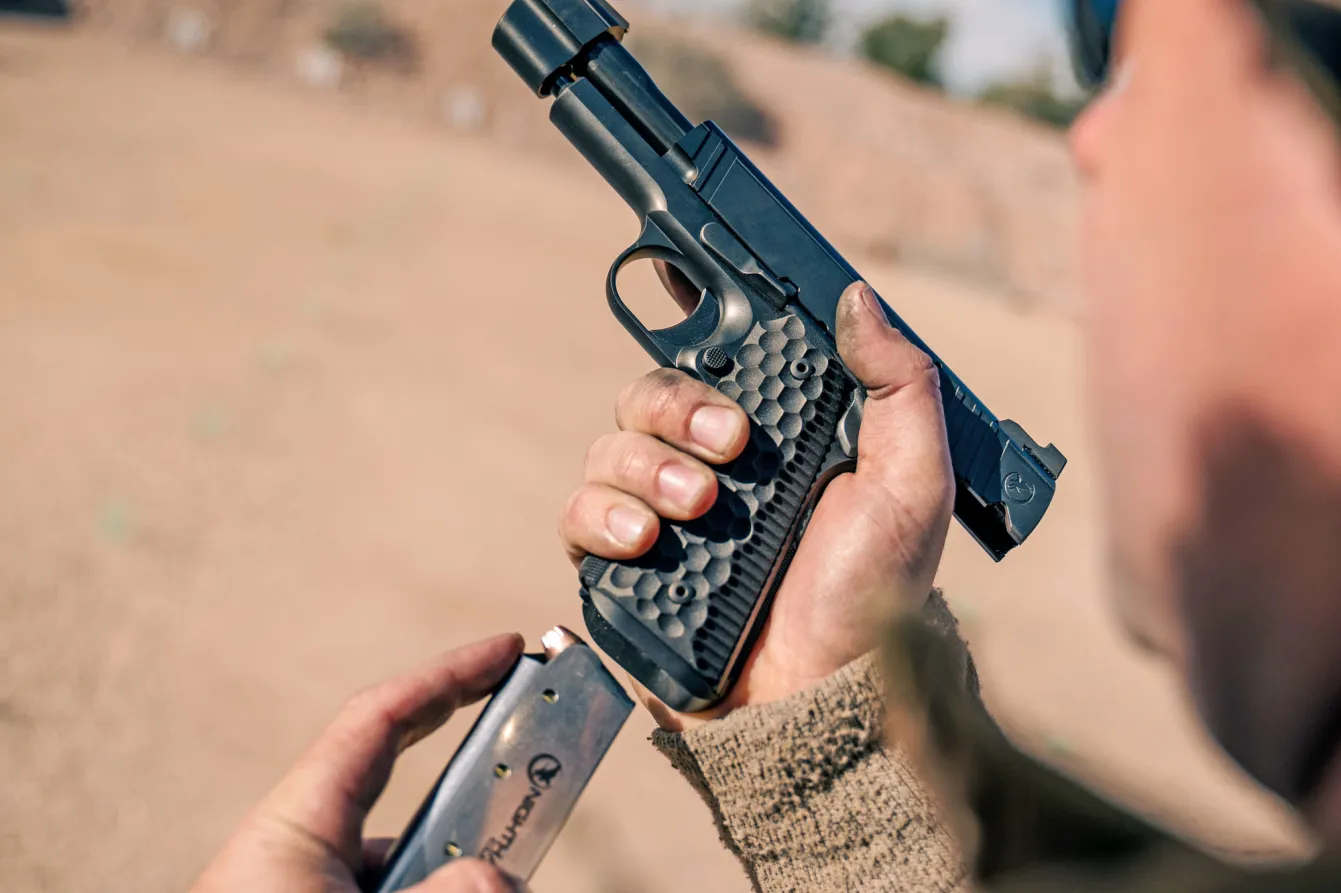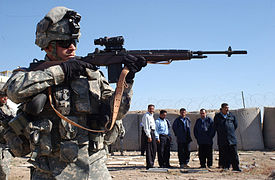Pistols are one of the most popular and versatile categories of firearms, known for their compact size, ease of use, and effectiveness in a wide range of situations. Whether used for personal defense, law enforcement, military applications, or sport shooting, pistols offer a blend of portability and firepower that makes them an essential tool in modern weaponry.
In this article, we will explore the various types of pistols, their history, uses, and the factors that make them a prominent choice in the world of firearms.
1. What Is a Pistol?
A pistol is a type of handgun designed to be held and fired with one hand. Unlike rifles or shotguns, which are designed to be fired from the shoulder, pistols are compact, lightweight, and intended for close-quarters use. They are typically chambered for smaller calibers compared to larger firearms, making them easier to handle while still delivering a powerful shot.
Pistols are generally categorized into two main types: revolvers and semi-automatic pistols.
- Revolvers: Revolvers feature a rotating cylinder that holds ammunition. When the trigger is pulled, the cylinder rotates to align a new round with the barrel, allowing the user to fire successive shots. Revolvers are simple in design, highly reliable, and typically have fewer malfunctions compared to semi-automatic pistols.
- Semi-Automatic Pistols: Semi-automatic pistols utilize a magazine to store and feed ammunition. When the trigger is pulled, a round is fired, and the pistol automatically cycles to eject the spent casing and chamber the next round from the magazine. Semi-automatic pistols are generally faster to reload and have higher ammunition capacities than revolvers.
2. History of the Pistol
The development of the pistol has been intertwined with advancements in firearm technology. Early pistols were often flintlock designs that used a single-shot mechanism, but as firearm technology evolved, so did the design and functionality of pistols.
- Early Pistols: The earliest pistols were developed in the 15th century, using black powder and flintlock mechanisms. These were essentially hand-held firearms that used the same principles as larger muskets. However, due to their rudimentary construction, early pistols were inaccurate, unreliable, and often dangerous to handle.
- The Revolver: Samuel Colt’s invention of the revolving mechanism in the 1830s was a groundbreaking advancement in pistol design. The Colt Paterson, introduced in 1836, was one of the first commercially successful revolvers. Its rotating cylinder allowed multiple shots to be fired without reloading after each shot, making it more effective in combat.
- The Semi-Automatic Pistol: In the late 19th and early 20th centuries, semi-automatic pistols became popular. The Browning M1911, designed by John Browning and adopted by the U.S. military in 1911, is one of the most iconic semi-automatic pistols. It became widely used by military, law enforcement, and civilians due to its accuracy, reliability, and stopping power.
3. Types of Pistols
Pistols come in a wide variety of designs, each serving a unique purpose. The two main categories of pistols are revolvers and semi-automatic pistols, but there are also subcategories within each.
3.1. Revolvers
Revolvers are handguns that feature a rotating cylinder that holds multiple rounds of ammunition. When the trigger is pulled, the cylinder rotates to align a fresh round with the barrel, allowing the user to fire again without needing to reload.
- Double-Action Revolvers: These revolvers can fire with a single pull of the trigger, which both cocks the hammer and rotates the cylinder. Double-action revolvers are favored for self-defense due to their simplicity and quick response time.
- Single-Action Revolvers: In single-action revolvers, the hammer must be manually cocked before each shot. This design results in a lighter, more accurate trigger pull but is slower to operate in fast-paced situations.
Revolvers are typically chambered in calibers like .38 Special, .357 Magnum, and .44 Magnum, and most models can hold between 5-6 rounds in the cylinder.
3.2. Semi-Automatic Pistols
Semi-automatic pistols are firearms that use a detachable magazine to store ammunition. The mechanism automatically loads the next round into the chamber after each shot is fired, making it faster to shoot and reload compared to revolvers.
- Single-Action Pistols (SA): These pistols require the hammer to be manually cocked before the first shot, but once cocked, the pistol fires with a lighter trigger pull. The Colt 1911 is one of the most famous single-action pistols, often chambered in .45 ACP.
- Double-Action/Single-Action Pistols (DA/SA): These pistols feature both double-action for the first shot and single-action for subsequent shots. The Sig Sauer P226 is a popular model that uses this system. Double-action/single-action pistols offer a balance between a quick initial shot and an accurate follow-up shot.
- Striker-Fired Pistols: These pistols do not have an external hammer. Instead, they use an internal striker mechanism that is partially cocked when the gun is loaded. The Glock series is an example of striker-fired pistols, and they are renowned for their simplicity and reliability.
Semi-automatic pistols come in a wide range of calibers, such as 9mm, .40 S&W, .45 ACP, and more. They also vary in magazine capacity, typically ranging from 6 to 17 rounds.
3.3. Derringers
Derringers are small, single- or double-barrel pistols designed for concealability and close-range self-defense. Due to their compact size, they are easy to hide and carry but typically hold only one or two rounds at a time. Derringers are often chambered for small calibers like .22 LR or .38 Special.
3.4. Target Pistols
Target pistols are designed specifically for precision shooting in competitions and target practice. These pistols are often semi-automatics with features such as adjustable sights, longer barrels for increased accuracy, and specialized grips to reduce recoil. Olympic-style pistol shooting, for example, uses highly specialized target pistols.
4. Uses of Pistols
Pistols serve a variety of purposes, making them a popular choice for many different users.
- Personal Defense: One of the most common uses for pistols is personal protection. Their compact size and ease of concealment make them ideal for self-defense in situations where carrying a larger firearm, such as a rifle or shotgun, would be impractical. In many countries, carrying a concealed pistol is legal, subject to specific laws and regulations.
- Law Enforcement: Pistols are standard issue for law enforcement officers around the world. Police officers often carry pistols as sidearms for quick access in dangerous situations. The semi-automatic pistol is the most common type of sidearm used by police due to its reliability and ease of use.
- Military: While rifles and shotguns are the primary weapons of the military, pistols are commonly issued as sidearms. Military personnel often carry pistols for use in close-quarters combat or as a backup weapon in the event their primary weapon is damaged or unavailable.
- Sport Shooting: Pistols are widely used in competitive shooting sports. Events such as target shooting, practical shooting (IPSC), and Olympic pistol shooting all involve pistols. Competitive shooting requires a high level of precision, and specialized pistols are designed to meet the demands of these disciplines.
- Hunting: Although less common than rifles or shotguns, pistols are used for small game hunting. Certain revolvers and semi-automatics are chambered in larger calibers, making them suitable for hunting larger animals in regions where handgun hunting is allowed.
5. Pistol Laws and Regulations
Pistol ownership and use are highly regulated in many countries. Legal requirements vary significantly depending on the jurisdiction. Some countries, such as Japan and the UK, have strict gun control laws that severely restrict pistol ownership, while others, like the United States, have more relaxed laws in certain states.
In the United States, federal law requires background checks for all gun purchases from licensed dealers, including pistols. Some states also have additional regulations, such as mandatory waiting periods, concealed carry permits, and restrictions on certain types of pistols, such as those with high-capacity magazines. On the other hand, states like Texas and Arizona have more lenient laws that make it easier to own and carry pistols.
6. Conclusion
Pistols are one of the most versatile and widely used categories of firearms, offering a range of features that make them suitable for self-defense, law enforcement, military, and recreational use. From the early days of flintlock pistols to the modern semi-automatics of today, pistols have evolved to meet the needs of their users.
Whether for personal protection, competitive shooting, or military use, pistols continue to play a critical role in the world of firearms. However, their use and ownership are also subject to ongoing debates about gun control, safety, and public policy, making pistols a key subject of discussion in the broader context of firearm regulation.



